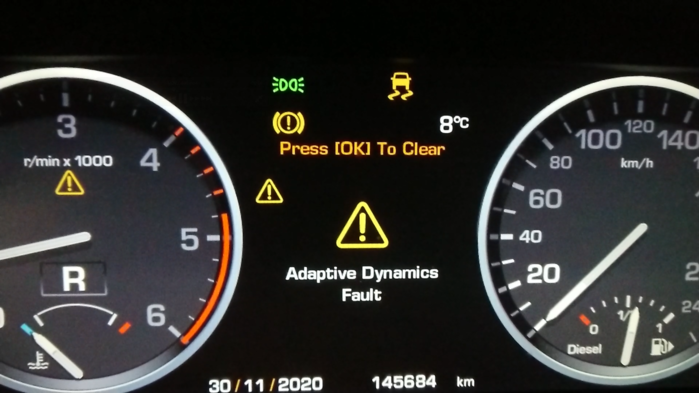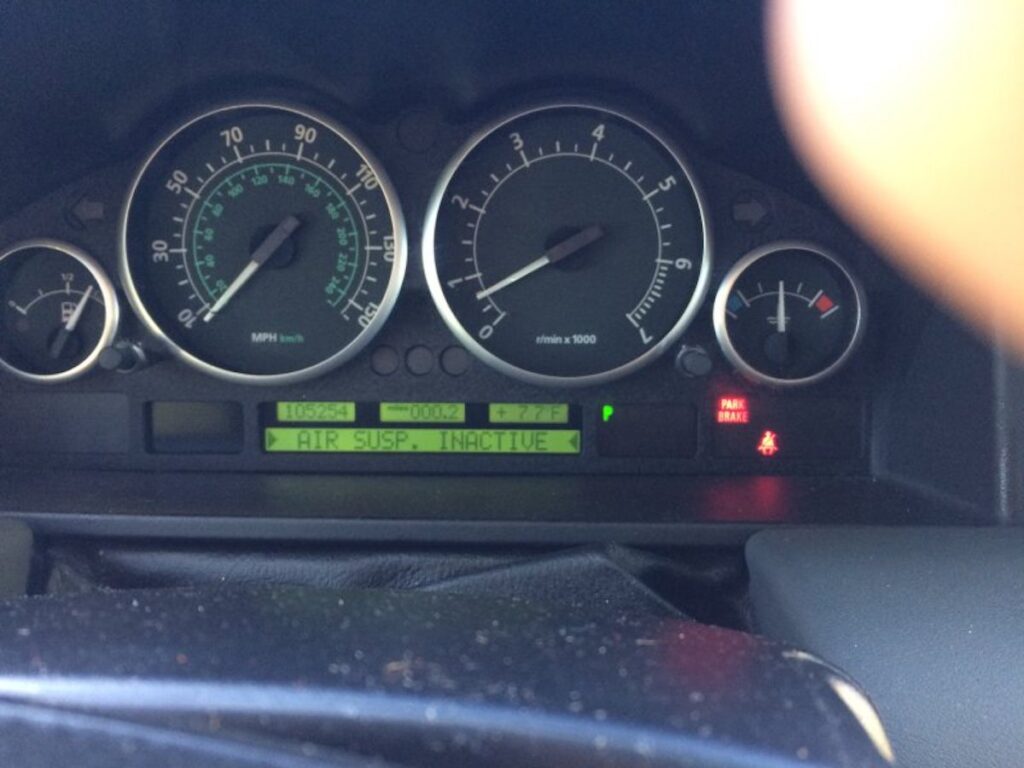Okay, picture this: you’re cruising in your beloved Range Rover. You feel like royalty, gliding over bumps like they're mere suggestions. But then...BAM! The dashboard lights up like a Christmas tree. Adaptive Dynamics Fault. Ugh.
Suddenly, your luxurious ride feels less like a cloud and more like a bouncy castle. Not the regal experience you signed up for, right? Don't panic! Let’s talk about how to handle this, without needing a PhD in automotive engineering.
The "Did I Do Something Wrong?" Moment
First things first, breathe. Most of the time, the fault isn't some catastrophic engine meltdown. It's often a sensor throwing a hissy fit. These sensors are responsible for telling the car how the road is, so the suspension can adjust.
Think of them as the car's inner whiners, constantly complaining about potholes and speed bumps. Sometimes, they just get confused. And like any good therapist (or car owner), you need to figure out what's really going on.
The Obvious (But Often Overlooked) Checks
Start with the basics. Is anything visibly damaged? Were you *just* doing some off-roading that would make even a mountain goat sweat? A quick visual inspection can save you a ton of headache.
Check the suspension components for any signs of damage. Look for obvious signs of wear and tear. Sometimes it's as simple as a loose wire or a damaged connector.
The Magical Reset Button (Maybe)
Okay, this is where the hope springs eternal. Try turning the car off, waiting a few minutes, and then starting it again. It's the automotive equivalent of "Have you tried turning it off and on again?".
Sometimes, this simple reboot clears the fault. If it does, celebrate with a victory lap! Just kidding (maybe). Keep an eye on it. The fault might reappear.
When to Call in the Professionals
If the reset doesn't work, it's time to enlist the help of your friendly neighborhood mechanic. I know, I know, it's tempting to become a DIY guru, but sometimes you need to admit defeat.
A proper diagnostic scan will pinpoint the exact source of the problem. This will save you money in the long run by preventing unnecessary repairs. Think of it as an investment in your sanity.
"Don't be afraid to ask questions! Understanding what's going on with your car can empower you and prevent future surprises."
The Common Culprits: Sensors and Actuators
Often, the issue lies with the adaptive dynamics sensors themselves. These little guys can fail due to age, wear, or good old-fashioned bad luck. Replacement is usually straightforward.
The actuators, which control the dampers, can also be the problem. If they're sticking or not responding properly, your ride will suffer. Replacing them is a bit more involved, but still doable.
The Takeaway: Stay Calm and Carry On
An Adaptive Dynamics Fault on your Range Rover isn't the end of the world. It's a common issue that can often be resolved with a little troubleshooting and, if necessary, professional help.
Remember to stay calm, do your homework, and don't be afraid to ask for assistance. Your luxurious, cloud-like ride will be back in no time. And who knows, you might even learn something new about your car in the process!
And remember, a little preventative maintenance goes a long way. Regularly check your suspension components and address any minor issues before they escalate. Your Range Rover will thank you for it!
















![Range Rover Suspension Fault [Common Signs, Causes, And Fix] - Adaptive Dynamics Fault Range Rover How To Fix](https://www.autoexpro.com/wp-content/uploads/2023/10/Signs-Of-Range-Rover-Suspension-Faults-1024x544.jpg)





